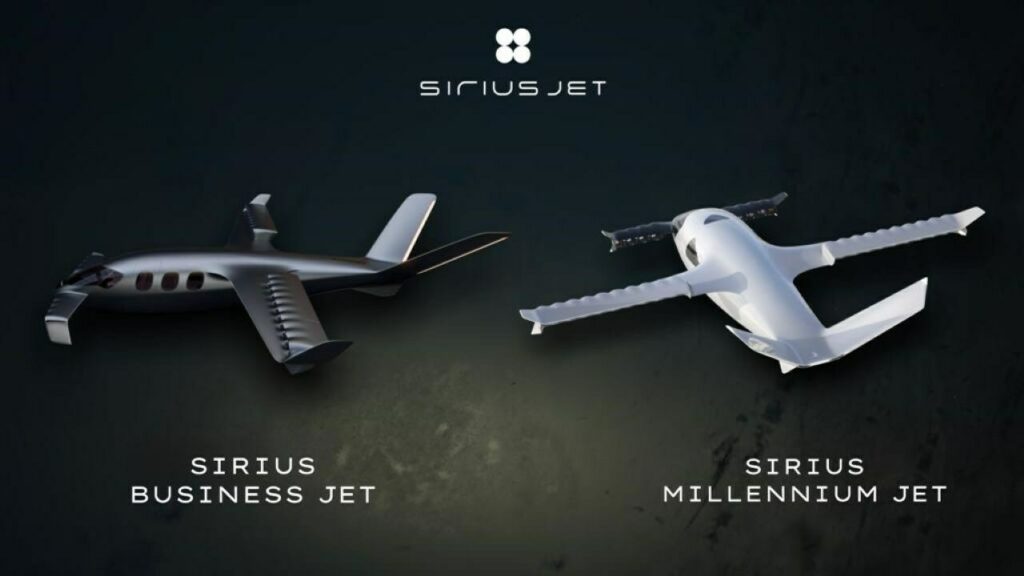Swiss aviation startup Sirius Aviation AG has recently unveiled the Sirius Jet, heralded as the world’s first hydrogen-powered Vertical Take-Off and Landing (VTOL) aircraft.
In a collaborative effort with BMW’s Designworks and Sauber Group, this revolutionary aircraft aims to redefine the possibilities of air travel, combining jet aerodynamics with the versatility of both airplanes and helicopters.
The Sirius Jet represents a major stride toward sustainable aviation, boasting a hydrogen-electric propulsion system that enables high performance and zero emissions. The aircraft’s design allows for extended flight distances, impressive speeds, and high altitudes, all achieved with near-silent operation, marking a significant advancement in aviation technology.
The development of the Sirius Jet has been a result of intense research and development efforts by Sirius Aviation AG, with a dedicated team of over 100 engineers working in the lakeside town of Baar since 2021. The company asserts that they have initiated the certification process with the Federal Aviation Administration (FAA) and plan to conduct the first demonstration flights in 2025. Their ambitious timeline includes achieving full certification, initiating commercial deliveries, and introducing shuttle flights by 2028.
The Sirius Jet is offered in two variants – the Sirius Business Jet and the Sirius Millennium Jet. The former, a zero-emission hydrogen-powered VTOL aircraft, accommodates up to three passengers with a flight range of 1,150 miles. Engineered for high altitudes of 30,000 feet and a cruise speed of 323 mph, the Sirius Business Jet emphasizes a pressurized cabin and ducted fan design solutions, ensuring a quiet noise level of 60dBa.
On the other hand, the Sirius Millennium Jet, designed for commercial use, can carry up to five passengers but sacrifices some range, offering 650 miles on a single flight. The propulsion system, featuring 20 fans along its wings and 8 mounted in the canard, is geared towards achieving maximum efficiency.
While the Sirius Jet promises groundbreaking advancements, the use of hydrogen in aviation is not without its challenges. Liquid hydrogen, in particular, presents logistical and technological hurdles due to the need for extremely low temperatures during distribution and flight. Companies in the aviation sector are actively working on developing aviation-grade powertrains for hydrogen, but widespread adoption still faces obstacles, including the lack of infrastructure for gaseous hydrogen.
